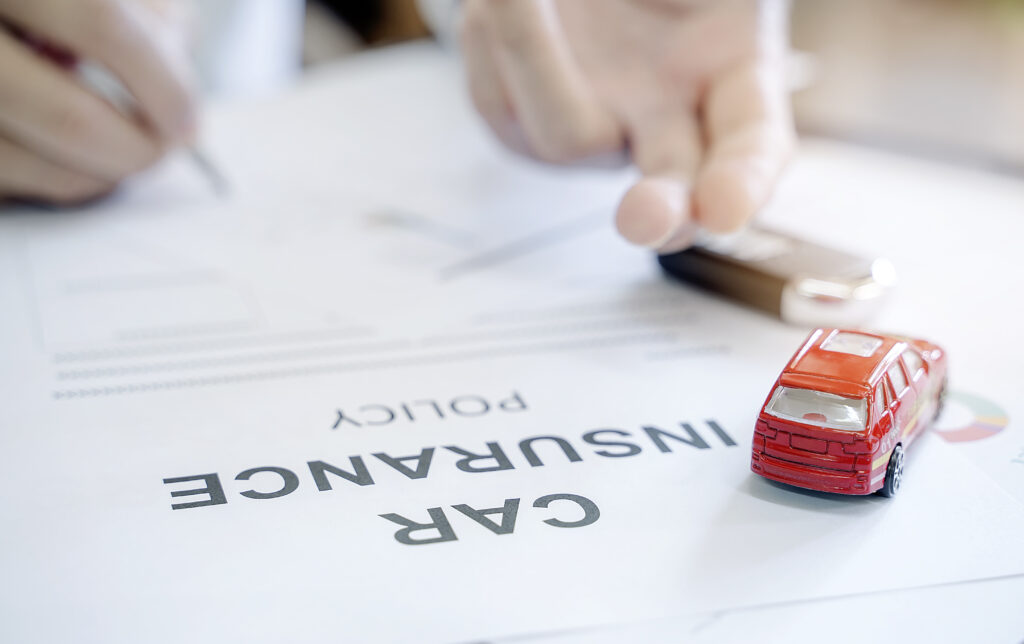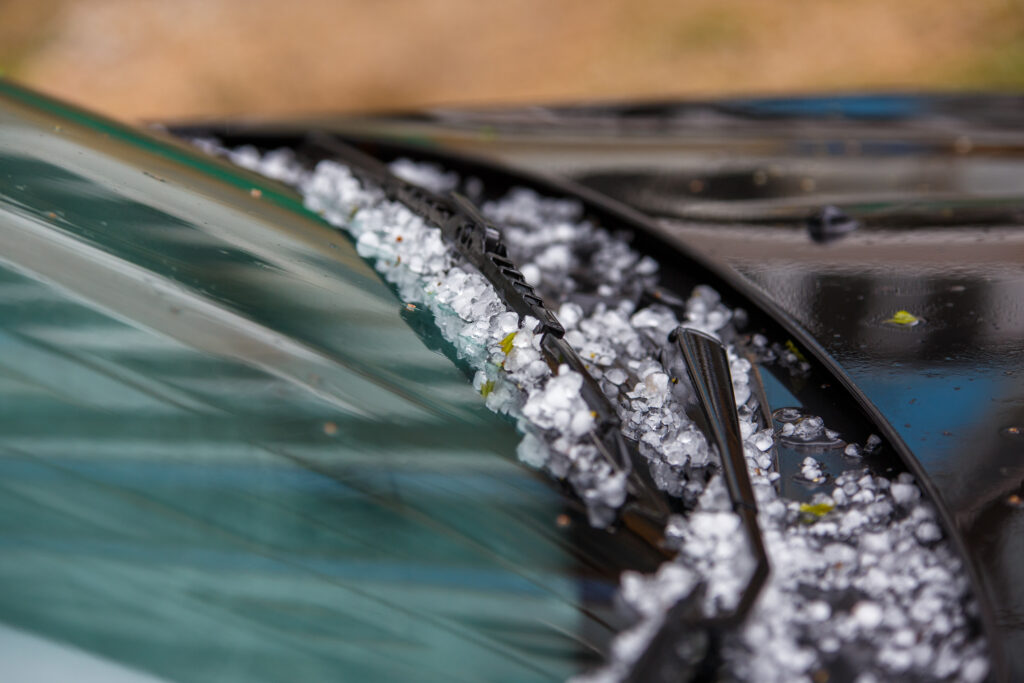Vandalism is when someone intentionally damages your vehicle. It can be very unsettling. After all, why would someone purposely cause harm to your property?
When someone vandalizes your vehicle, it can be expensive to repair it. Fortunately, if you have comprehensive car insurance coverage, you won’t need to worry about any out-of-pocket costs.
This article will explain how auto insurance shields you from expenses related to vandalism, including which coverages you may need. We’ll also talk about what your insurer counts as vandalism, as well as the different types.
How Insurance Protects You From Vandalism
Your insurance will cover vandalism if you have the right coverage. In most cases, comprehensive coverage will protect you from any related costs. But other types, such as full glass coverage and guaranteed asset protection (gap), may come into play. Let’s take a look at which coverages will help you if someone damages your car:
Comprehensive
What would you do if a random disaster destroyed your car? This is where comprehensive coverage comes in. It covers any vehicle damage from acts of God. This includes damage from disasters like weather, theft, and vandalism.
If someone intentionally damaged your car, your comprehensive coverage would cover it. All you need to do is pay the deductible that you agreed to when you set up your policy. Note that comprehensive differs from collision in which type of incident each covers. Collision covers damages from crashes and comprehensive pays for damages to a vehicle from just about anything other than a car accident.
Full Glass
If someone vandalized your car, chances are your windows have some damage. For most people, their comprehensive insurance would cover vehicle window damage. However, in some states, you can add comprehensive glass protection to your policy. This repairs or replaces your windshield without needing you to pay a deductible.
Note: Florida, Kentucky, or South Carolina residents don’t need full glass or comprehensive insurance to repair their windows. These states require insurers to repair or replace car windows for free.
Guaranteed Asset Protection (Gap)
In some cases, a vandal could wreck your car beyond recognition. This could lead your car insurance company to declare your vehicle a total loss. If you’re financing or leasing, you’re still responsible for paying off the loan.
Having guaranteed asset protection will help you avoid any out-of-pocket payments after your vehicle is totaled. Gap insurance pays the difference between your car’s actual cash value (ACV) and the rest of your loan.
Roadside Assistance
After someone trashes your car, you may need to have someone tow it. Roadside assistance will help cover the towing costs so that you can get the car to a shop for repairs.
Rental Reimbursement
While your car’s in the shop, you’ll still want to be able to get around. With rental reimbursement coverage, your insurer will pay for you to drive a rental until your other vehicle’s all set.
What Counts as Vandalism?
Vandalism is a broad term that covers many types of vehicle damage. But it boils down to this: the act of intentionally causing harm to one’s vehicle. For this reason, accidental damages don’t usually count.
Types of Vandalism
Damages can vary depending on the type of vandalism. It can be as simple as throwing an egg or as serious as total demolition. Here are examples of what constitutes it:
- Egging
- Defacing with paint or graffiti
- Keying the paint
- Submerging a car in water
- Tire slashing
- Dents
- Theft of parts, such as catalytic converters, tires, and radios
- Smashing windows or lights
- Damage from riots
What to Do If It Occurs
It can be a traumatic experience to have someone vandalize your car. You might be struggling to know what to do next. Well, there are a few important steps you should take to make things easier:
- Assess the damage. Many different parts could be harmed. Be sure to take stock of what parts are damaged and how bad it is.
- File a police report. You should contact the police ASAP. They can help you know what to do next and they could even find the person who did it.
- Notify your insurance company. By calling your insurer, it’ll have more info before you file a claim. Whoever you speak to may also be able to help you be sure if you should file.
- File a claim. To avoid paying any out-of-pocket repair costs, it’s best to file a claim. Most insurers allow you to do this either online or over the phone.
How to Avoid It
Vandalism is a random and senseless crime. However, there are crucial steps you can take to avoid it:
Park in a Garage
The best way to avoid intentional damage is to park in a garage. Your vehicle will be safe and sound inside. Garaging your car might save you a bit on your insurance, too.
Use Cameras
It’s a smart idea to install cameras that aim directly at your driveway (or wherever else your vehicle’s parked). This will help you know what’s going on at all hours of the day. It’ll also act as a deterrent for some who notice the cameras.
You should also think about installing a dashcam in your vehicle. Crooks may see this and avoid your car. Even if they continue on with the crime, you’ll have evidence to show the police and your insurance company.
Keep the Area Around Your Car Well-Lit
Make sure to only park in well-lit areas. If you park in your driveway, make sure to turn on any lights around the car. This will help deter vandals and help witnesses see what’s going on.
Don’t Leave Any Valuables Inside
Don’t leave anything of value inside your car! If you do, you’re practically asking for someone to break in. It’s best to keep your interior “dealer clean.” This means it should be as empty and clear of items as possible.
Bonus tip: avoid leaving garage door openers out in the open. If someone gets a hold of it, they may as well have a key to your house.
Will My Rates Go Up if I File a Claim?
When you file an auto insurance claim for vandalism, it’s unlikely that your rates will go up. Insurers look at patterns in your claim-history. They also pay attention to your driving record. If this is your first claim in a long time (or ever), your premium should remain as it is. However, this may vary depending on your provider. Be sure to contact your provider before filing a claim.
If your premium does go up after a claim, you may need to seek out another insurer. In this case, it’s a good idea to gather car insurance quotes and compare them to find the best deal.
Frequently Asked Questions
Does a car break-in count as vandalism?
Car break-ins will only count if there is damage to your car. This is most often the case. There could be damage to many parts, including:
- Door handles
- Windows
- Internal parts, such as catalytic converters and engine
- Tires
- Radios
How do I prove someone vandalized my car?
It’s tricky to prove someone vandalized your vehicle. You have to be able to prove someone intentionally caused harm. The best thing to do is gather as much evidence as you can. But don’t just do your detective work alone. Make sure you work closely with the police.
Here are some of the best ways to prove vandalism:
- Assessing the damage. If someone slashed your tires or broke your windows, it’s likely vandalism.
- Reviewing video evidence. With surrounding video cameras or a dashcam, you’ll have undeniable evidence.
- Look for fingerprints. If the vandal was sloppy, they may have left fingerprints. The police should be able to find this if it’s there.
- Talk to witnesses, if any. Be sure to check with neighbors or other possible witnesses. They may have seen the culprit’s license plate or face. This could be key to proving intentional harm.
Should I always file a claim after vandalism?
It may not always make sense to file a claim after vandalism. If the damages were minor, you could end up paying more for your deductible than repairs. You shouldn’t file in this case.
You also should think twice before filing a claim if you’re at risk for a rate increase. If this will be your third claim in the last three years, you could see a dramatic rise in your premium. This is even despite the damages not being your fault.
Does car insurance cover window vandalism?
Yes, your car insurance will cover intentional damage to your windows. In most cases, your comprehensive coverage pays to repair or replace your glass. All you need to pay is a deductible.
However, if you have full glass coverage, you can receive window repairs deductible-free. To get this coverage, you’ll need to add it to your policy if your insurer offers it.


